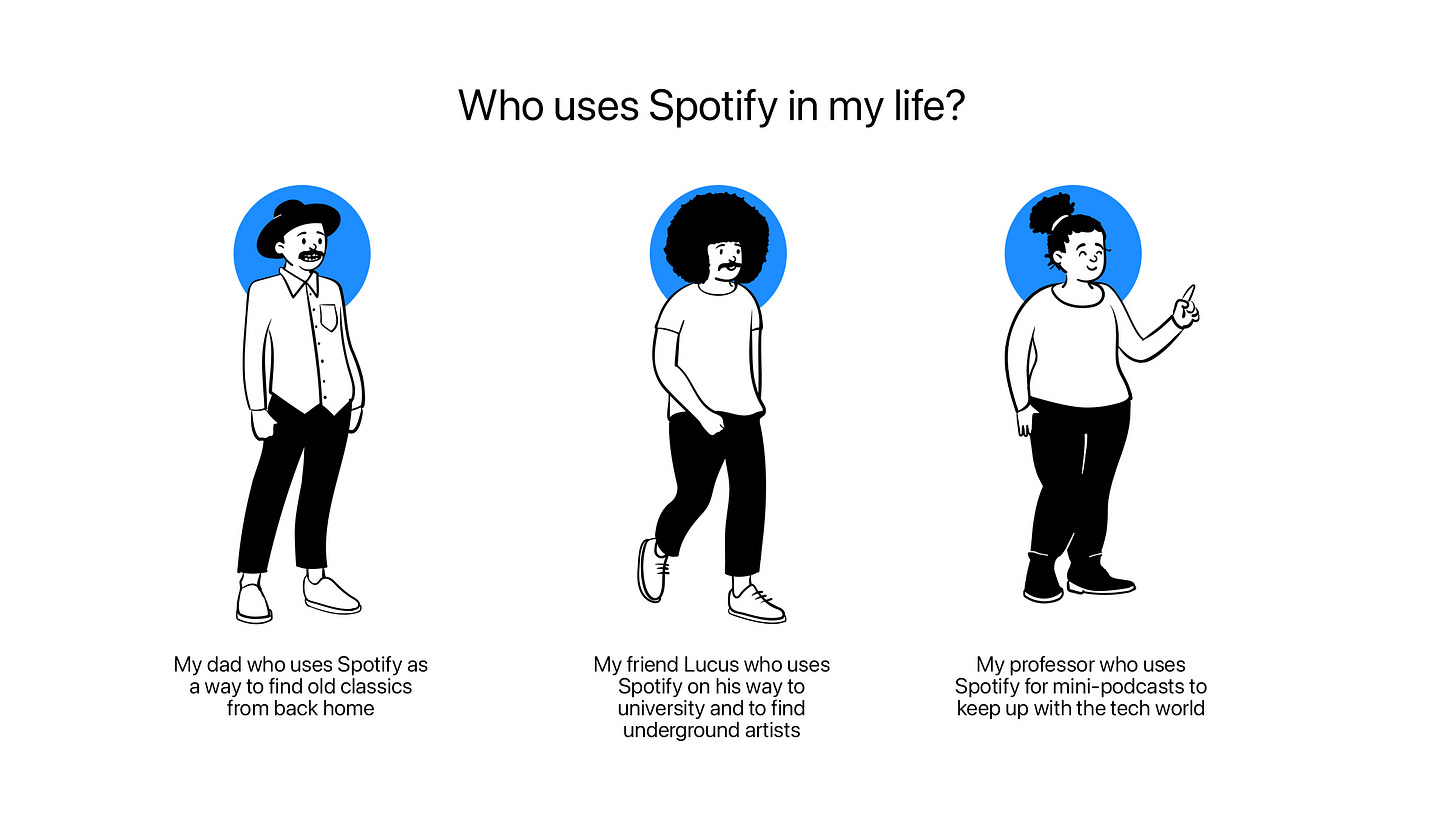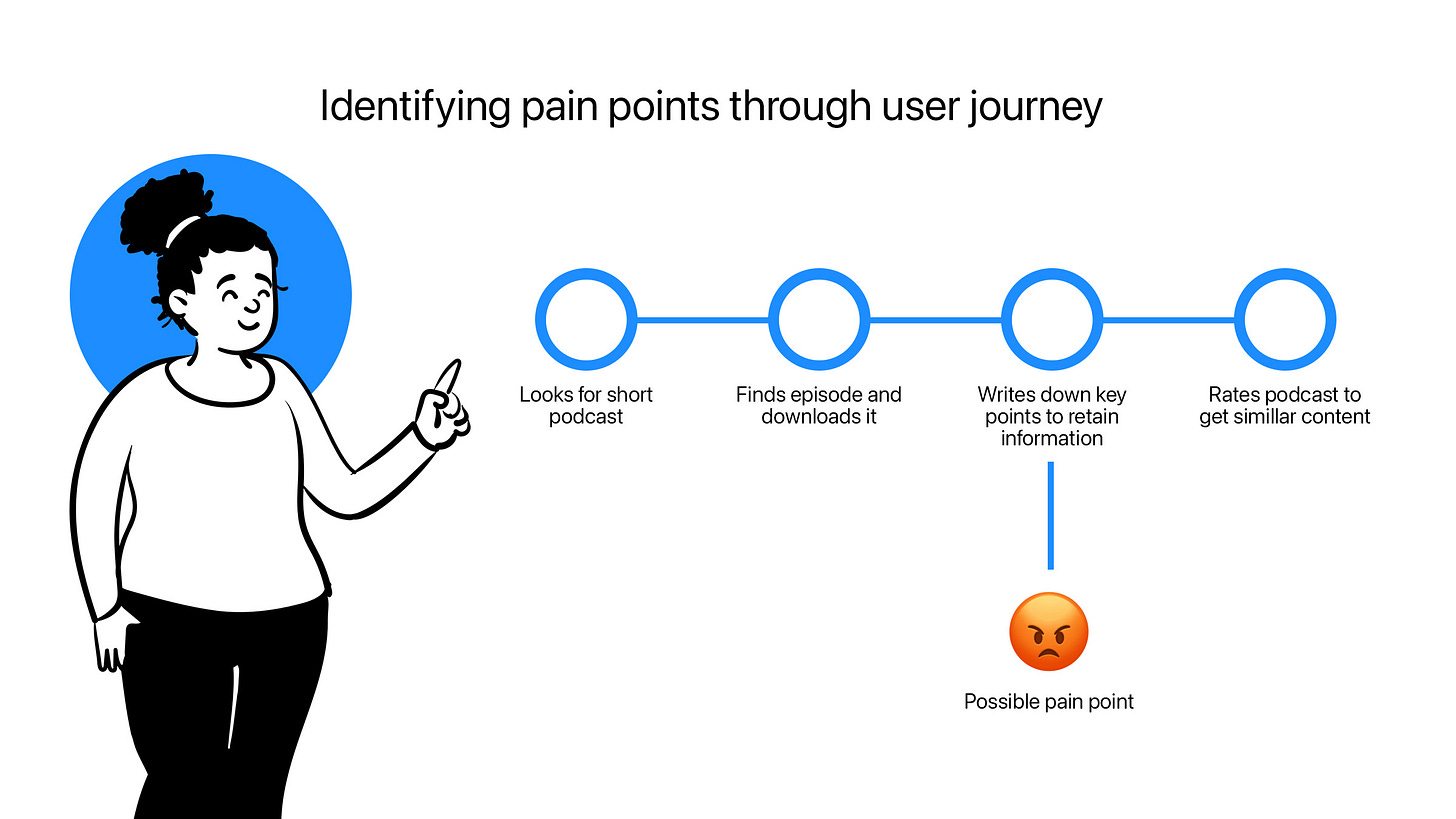Netflix Enters the Quiz Space 🕹, Selecting the Right User in Product Design 🧩, and More Resources to Start the Right Conversations in Product for March ☕️
Welcome to March’s issue of Tyler Talks Product! This month we're looking at Netflix entering the gaming space, how to define user personas in product design, new internships for summer, and more!
Welcome to March’s issue of Tyler Talks Product! I want to let readers know that I will be conducting resume reviews in March for students and early professionals looking to break into the product management industry. In order to get your resume reviewed, send me a quick message on LinkedIn. Now, let’s take a seat at the table and talk about some Product!
🗓 News from This Month 🗓
Netflix is launching Trivia Quest
Coming April 1st (no this is not an April fools joke) Netflix will be releasing a daily trivia show called Trivia Quest. It will be similar to other interactive shows such as Black Mirror: Bandersnatch and Cat Burglar. Each episode will include 24 trivia questions (12 easy and 12 hard, which means I am getting 12 out of 24 correct). Categories include: science, entertainment, sports, art, geography, and history. It’s no surprise that Netflix is trying to slowly break into the gaming space, as they’ve begun hiring senior management for a gaming division. However, this is their first real bet on seeing if users can view the company in both the television and gaming space.
Product for Thought: The first thing that I think about when a company enters an unfamiliar space is Product Market Fit. This classic PM term asks if a product or feature has a real need in the current market. The term in practice seems pretty simple, however, product managers spend months, if not years, answering this question. There are multiple ways to validate product market fit such as: focus groups, 1:1 interviews, forums and competitor performance. However, it all boils down to one thing: “Does your customer LOVE your product enough to actually purchase it?"
Netflix has concluded that gaming is the natural next step for the company, but will users partake in daily trivia games on their platform? Wordle's recent and astronomical success was the answer Netflix has been looking for. With Wordle players actively checking in to solve a daily word puzzle and comparing results with friends, it’s reasonable to assume that users would do the same thing with daily trivia on Netflix. While on the topic of Wordle, let me say I am awful at it; my editors will attest to my horrible guesses. Add on the fact that streaming platform viewers exemplify high motivation to check back for new episodes, special features, and fresh content, Netflix has a high probability bet that they’re looking to cash in on now.
Netflix’s Wordle is _ _ _ _ _ (Look to the end for the answer)
Editor’s note: Tyler is so awful at Wordle. He is on his 7th partner. One time he asked me if we can use names.
- Lucus
TikTok expands maximum video length to 10 minutes
A question I have come to ask is - can I watch ten minutes worth of griddying? TikTok has recently announced it's giving creators the option for ten minute videos - a move creators (and PM's) are questioning the necessity of. Considering the way that Tik Tok has been positioned against other content platforms such as YouTube and Instagram, it seems counterintuitive to extend video time when users love Tik Tok for its quick and snappy content. The next question I ask is what data are Tik Tok PMs seeing that the public isn’t.
Product for Thought: Every product choice is deliberate. Every product choice is deliberate, and the process of making said choice can be a form of art. Typically, PMs have a set of metrics that they will test a new product feature against. Product Metrics are a set of quantitative stats that help gauge the success of a product. A set of product metrics often contains an OTM (One True Metric), which is deemed as the most important metric for the product. Additionally, there is usually a Guardrail Metric, which is a metric dedicated to being an indication of poor performance, even when the OTM is being optimized. For example, a company like Meta may want to optimize for time on site as an OTM, but may also optimize tasks done per session to make sure that a user’s time on site is efficient. Think about if a user on Facebook had a long session on site, but it was filled with long loading times between pages. I cannot pinpoint for certain which metric helped Tik Tok come to this decision, but if I had to guess, Tik Tok may have looked to use the increase in time to improve session time per user. What metric do you think Tik Tok based their decision to move to ten minute videos on?
✍🏽 Tyler’s Interview Tip - User Personas ✍🏽
Having learned about Mental Checkpoints last week to be more purposeful in interviews, this week I want to address a very integral step in the product design interview, which is User Personas. A User Persona is a hypothetical persona that is based on real-life user information. This is an important aspect to explore for any PM as it provides the right framing for why a product improvement/new product is needed and for whom. In the product design interview, creating user personas also acts as a brainstorming session to pinpoint relevant problems that are worth addressing. From talking with PMs who have acted as the interviewer, some common feedback I found was that:
“Interviewees do not have a structured way of prioritizing users”
“Interviewees take too much time to get past the user personas”
“All user personas sound the same”
“User personas are more demographic aspects rather than feeling like an actual person”
“The candidate never ends up picking or prioritizing what user is the best opportunity”
Working with User Personas is not easy. However, with the steps I’ve laid out below, I address these issues to create a more concise, natural, and fun answer within a structure that is easy to follow.
Below are the steps I take:
Take 30 seconds to think of three distinct users
Identify each users’ purpose for using your product
Identify the actions a user does with your product
What pain point does the user encounter from their current experience
Pick a user and explain your reasoning for why you prioritized them
Ask the interviewer if they have a preference for which user to select
Step One: Take 30 seconds to think of three distinct users
It’s easy to start naming off whatever three users that first come to mind. But trust me, nothing is more awkward than realizing mid-explanation that a better user exists. Therefore, I recommend asking your interviewer to let you take 30 seconds to carefully plan out what users to focus on. So let’s say you take my advice and take the 30 seconds and you tell me “Tyler, I have the time to think of users, but I don’t know what to think about.” Don’t worry! What helps me brainstorm potential users are three prompts that kickstart my brain into what I call “You better start thinking right now” mode. These are my three personal prompts, but I suggest you tailor and explore what makes the most sense for you.
Who are people in my life that use this product?
When I think of the product’s target demographic, who do I think of?
Am I considering personas based on ability and age rather than just lifestyle?
What I like about these prompts is that they often force me to think of actual people opposed to the standard Gen-Z student trope that many candidates often refer to when there is no real persona to fall back on. Let’s try an example with the first prompt, here are some people in my life that use Spotify that are distinct characters:
Step Two: Identify each users’ purpose for using your product
I often find that the hardest part of explaining a user’s purpose for a product is digging deeper than surface level goals. Keeping with the Spotify example, a candidate could say that each user chooses Spotify because they love music. However, is that everyone’s real purpose? To gain a deeper understanding of a user’s purpose for a product, I rely on Self-Determination Theory, which states that all people want to feel a sense of competence (need to be effective in dealing with their environment), autonomy (control in their life), and relatedness (ability to feel connected to those around them)! It’s a super simple framework that makes me think more thoughtfully about each user’s purpose. For example, let's take my dad and see how the Self-Determination Theory applies to his Spotify usage:
Step Three: Identify the actions a user does with your product
At this point, I have a set of personas and their associated purposes for using the product. The question now becomes: how do they use said product to achieve their intended purposes? I find this to be the easiest step. If you know the features of the product in question, it is easy to map what each person’s action would be to achieve their goals. The caveat to this step is the assumption that you know the product in question well. Thus, I recommend studying up on the product if the product in question is divulged to you beforehand.
Step Four: What pain point does the user encounter from their current experience
Each user will (hopefully) exhibit a pain point that is mutually exclusive from the rest. The question becomes how to uncover what each user’s pain point is. I use three tactics to discover exactly that. The first is to draw back on previous experiences. For many of my past mock interviews, I assign one of my users a persona that matches my own (because it is very easy to relate to). Therefore, when drawing upon a pain point for something such as Spotify, I reflect on my own pain points that relate to the product. Knowing this, I tend to write down any major pain points that I have with products in general to have as a bank to draw from (this is not a complaint repository, more like a source of new ideas for product studies when I need them lol).
My second recommendation is to mentally plot out their user journey for a product and identify possible points of friction. Let’s take my professor who uses Spotify to keep up with tech news, for example. This is how her user journey creates specific pain points:
Step Five: Pick a user and explain reasoning
Finally! It’s time to pick a user to focus on and solve their pain point. Now you cannot go into this choice blind. I know many candidates may choose to make a matrix to evaluate users on aspects such as depth, impact, and effort to solve. However, I find that from personal experience, this methodology takes too much time in an interview setting as proven by the feedback I spoke to earlier. I would rather allocate that time to talking about my solution. Therefore, I opt to choose a user and provide one good reason for why I chose said user. According to PMs that I’ve talked to who have played the role of interviewer, this seems to be enough to validate a choice and keep the tone of the answer conversational.
To validate the user group of your choice, I recommend using these points as the backbone of your argument:
Largest audience base
Most severe pain point
The consumer who peaks your interest the most
Step Six: Ask interviewer if they have a preference
This is a step that can often show your interviewer that you’re willing to collaborate and involve them in the conversation. The reason why I love asking the interviewer if they have a preference following the previous steps is because it acts as a perfect safety net. Hypothetically, if there was any doubt that your interviewer had in your selection (for whatever reason this may be), this question would act as the perfect opportunity for them to interject and alter what user you would try to solve for!
🧑🏽💻 Tyler’s Job Board 🧑🏽💻
For my Canadian Peeps 🇨🇦:
Digital Product Management Intern for VendorPM
Product Design Intern for UserTesting
Product Innovation Intern for LuluLemon
For my American Peeps 🇺🇸:
Product Management Intern for Intuit
Product Management Intern for Nvidia
Growth Product Management Intern for Glassdoor
⭐️ This Edition’s Resources ⭐️
Tech Talk for Non-Developers: A course dedicated to demystifying technical concepts for product managers in a more digestible way. (Fun Fact: I did this course and it helped a ton with my first PM job!)
USE CODE tyler80 FOR 80% OFF
Lean Analytics: A book breaking down how to prioritize metrics for some of the world’s most popular tech industries.
Product Talk- How to Launch a Product: A slide deck breaking down how to approach launching a product in a very easy and visual way. I personally used this deck to form the prompts I use when thinking about launching a product for my first internship.
☕️ Hey, Thanks for Being at the Table! ☕️
I just want to extend a personal thank you to those that have subscribed, your support is forever appreciated :) With March coming by and the weather warming up, you know what that means, RUNNING TIME! So be sure to go out there and take a break from product learning!
Also personal thank you to my editors (Cat, Anne, and Lucus) for taking the time to read each issue before it goes out to the amazing readers!
Thanks for reading this half-month’s issue.
I’m going to go make some coffee. Drop by again some time soon!
~ Tyler
Oh BTW, the Wordle answer is Trivia.









